Yeira Wong, Year 2 Research.
Abstract
The Chafer Beetle is a common infestation found in lawns throughout North America and Europe. They damage grass roots, and lead to lawn damage when skunks and birds uproot the earth in search of these grubs. Treatments available include adding nematodes Heterorhabditis bacteriophora and/or planting White Dutch Clover. This experiment tested the pH level of the soil verses grass growth when paired with White Dutch Clover and S. feltaie nematodes. 5 Experimental groups of grass were grown at pH levels 5, 6, and 7 with nematodes and varying amounts of clovers tested the effects the Chafer Beetle treatments would have on average grass height and percent yield. Grass grown at pH level 7 had a higher average height and percent yield compared to grass grown at pH level 5 or 6. The results indicate grass is least effected by the treatment when grown at pH level 7.
Introduction
Chafer Beetles also known as the European Chafer, Amphimallon majalis are insect pests that feed on the roots of grass leading to turf damage when skunks and birds dig up the soil in search of grubs (Pest Tracker, 2021). They were first discovered in New York in 1940 (Gambrell, 1946), but are now found in most of Europe and North America (CABI, 2020). Infestations occur when there are more than 5-10 grubs per 30 cm by 30 cm square of sod. This affects many landowners, as they must maintain their land and consequently the state of the grass they own as it can impact the value of their property (City of Vancouver). While it may not have a huge impact on the property’s value it can be taken into consideration when deciding between 2 similar places.
Common treatments for Chafer Beetle infestations include applying nematodes, Heterorhabditis bacteriophora that infect Chafer Beetles before development or replacing the grasses with other plants like the White Dutch Clover, Trifolium repens, that are not affected by the beetles (Macdonald, 2020). Both treatments can be implemented at the same time. There is evidence that growing grass and clover together creates benefits for both plants due to the white clovers ability to introduce N2 into the soil as natural organic fertilizer and coexist with the grass without impacting either species root health (Eekeren et al. 2009). Trifolium repens grown with Rhizobium in soil mixed with manganese, calcium, and aluminium have been found to still survive in pH levels 4.3-5.5 (Wood et al 1984).
Various species of nematodes can be beneficial and used for soil pest control while other can be harmful to plants. They enter the grub or pest though body openings and release a bacterium that will not affect the plant into the blood stream of the pest, killing it over a couple days (Barbercheck 2015). S. feltaie, the nematodes used in this experiment, is primarily used on larvae for cabbage, and onion maggots. In comparison to Heterorhabditis bacteriophora, the typical treatment for Chafer Beetles, S. feltaie was use in this experiment. While they do differ they are both moderately freezing tolerant, dying off at a temperature of −5 °C (Farman and Wharton, 2013).
However, it is unclear as to whether the nematodes implemented will influence grass growth when paired with the clover treatment. This experiment aims to test the effects on percent yield and height for grass grown at lawn-like environments undergoing Chafer Beetle Treatment. To investigate the link between nematodes and grass growth, 5 experimental groups were grown at pH Level 5, 6, and 7 as areas with higher rainfall typically have pH soils in the range from 5- 7, (Queensland Gov).
Materials and Methods

Preparation
Five experimental groups grown at varying pH’s and amounts of soil (Scotts Turf Builder), peat moss (Sunshine Canadian), clover seeds (White Dutch Clover), grass seeds and nematodes (Nema Globe) were prepared (Figure 1). Group 1 through 4 tested the effects of the clover and nematode treatments on grass, whereas Group 5 was to test if the clovers themselves would be affected by the nematode treatment. Varying pH may react differently with the various treatments, so the chosen pH levels were less acidic than what the White Dutch Cloverhave proven to be able to grow in ensuring that they should survive in the experiment. Random sampling of grass seeds, clovers, and nematodes ensured unbiased results. Every experimental group was placed inside the house with identical room light, temperature, and received water at the same time, 11 pm at night. Blinds were opened each morning at around 9 AM and closed around 5 PM ensuring natural light was available to all groups. There was no watering schedule, but each group was watered the same amount (3/4 cup, 1 cup or 1 ½ cup) whenever they looked dry/when the soil was touched and did not stay on the finger of the experimenter.
Soil Preparation
The soil (Scotts Turf Builder) was either mixed with Canadian Sphagnum Peat Moss (Sunshine) until they reached the desired approximate pH level of 6, and 5 or left unmixed at pH level 7. 2 cups of water were mixed into each bag/box and mixed thoroughly so that the soil was moistened. At the end each batch of soil was checked once more, but taking a tablespoon of the soil from each, mixing it with 1 cup of water, and using the pH meter to check acidity/alkalinity.
Grass planting
Group 1-4 each received 4 grams of grass seeds. Seeds were weighed on a (scale) and scattered by hand randomly into each receiving group. There are approximately 1000 seeds in 4 grams. They were planted on January 22nd, 2021 and watered 1 cup of water daily for 7 days and then as needed after.
Clover Planting
Groups 1-3, and 5 each received 50 clover seeds. Seeds were counted individually and scattered into each respective group by hand. As grass was already growing at this point, bag/box were gently shaken to ensure that the seeds all reached the soil and were not simply resting on grass blades. They were planted on February 11th, 2021 and watered ¾ cups of water each day for 5 days right after planting.
Nematode implementation
Nematodes (NemaGlobe) S. Feltiae, were introduced to each of the batches. Each batch received 1 bio pouch that contained 1 million nematodes each. They were placed directly onto of the soil, approximately in the center of each bag/box and immediately watered as instructed to ensure the survival of the nematodes as they require moisture. They were implemented on March 4th, 2021. They were watered 1 cup of water every other day, up until the end of the experiment.
Data collection
Over the course of the experiment, qualitative observations about the plants were made weekly, and quantitative ones were made on March 4th, 2021. Changes in plant growth and weather, water amounts etc. were also recorded.
Results
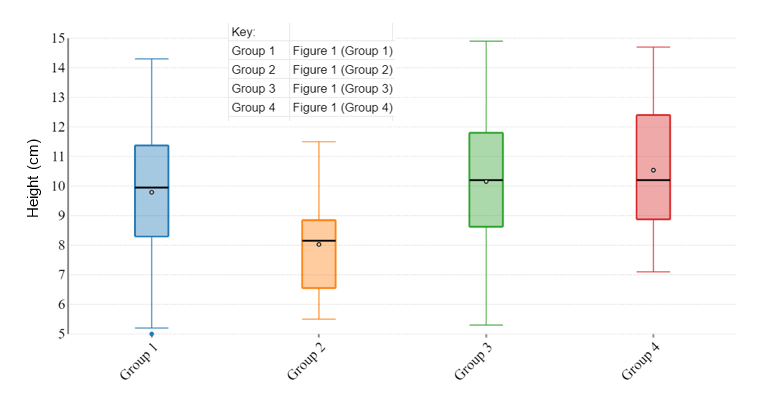
Figure 2: Side by side box plot comparisons for grass height randomly selected from Group 1-4.
Table 1: The 5 number summaries based on the box plots for Groups 1-4.

The range for each group respectively is approximately, 6 cm for Group 1, 5.5 cm for Group 2, 9.9 cm for Group 3 and 7.7 for Group 4. The average height for each group is approximately 9.79 cm for Group 1, 8.03 cm for Group 2, 10.16 cm for Group 3, and 10.54 cm for Group 4. Group 4 has the highest average height and Group 3 has the tallest individual plant found.
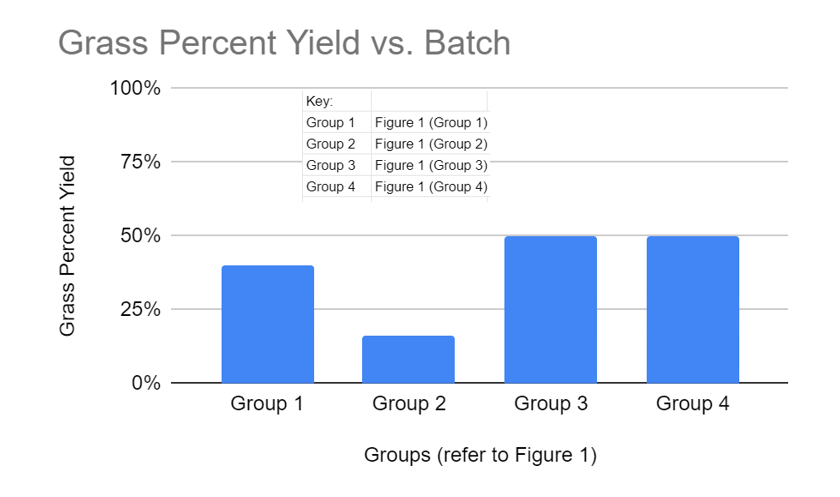
Figure 3: Graph of overall percent yield of grass that grew from planted grass seeds in each Group. Each group was planted with approximately 3400 seeds each.
The highest percent yield for grass samples is found in Groups 3 and 4 who have approximately the same percent yield, 50%. Group 2 had the smallest percent yield at approximately 16%
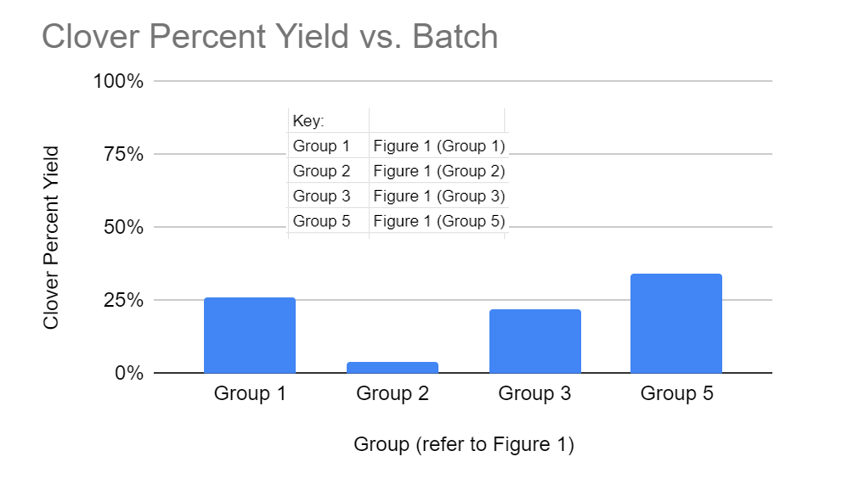
Figure 4: Graph of overall percent yield of clovers that grew from planted clover seeds in each Group. Each group was planted with 50 seeds each.
Overall, each group grew less than 50% of the original planted number of seeds. Group 2 had the lowest yield at 4% and Group 5 with the highest at 34%. Clovers grown with grass had a smaller yield that clovers grown without grass.
Table 2: Qualitative observations prior to nematode implementation: March 4th, 2021
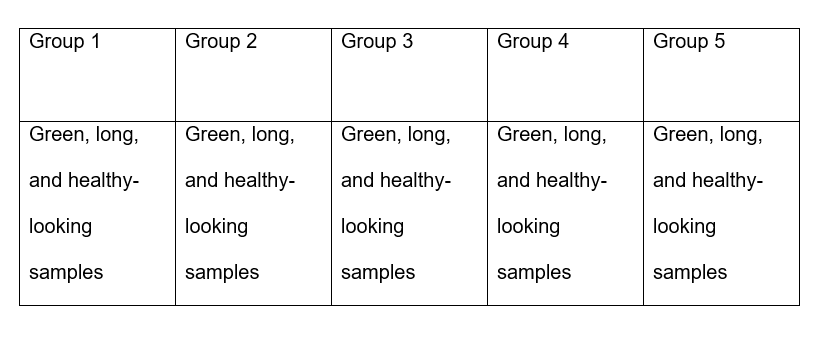
Table 3: Qualitative observations last day after nematode implementation date: March 25th, 2021
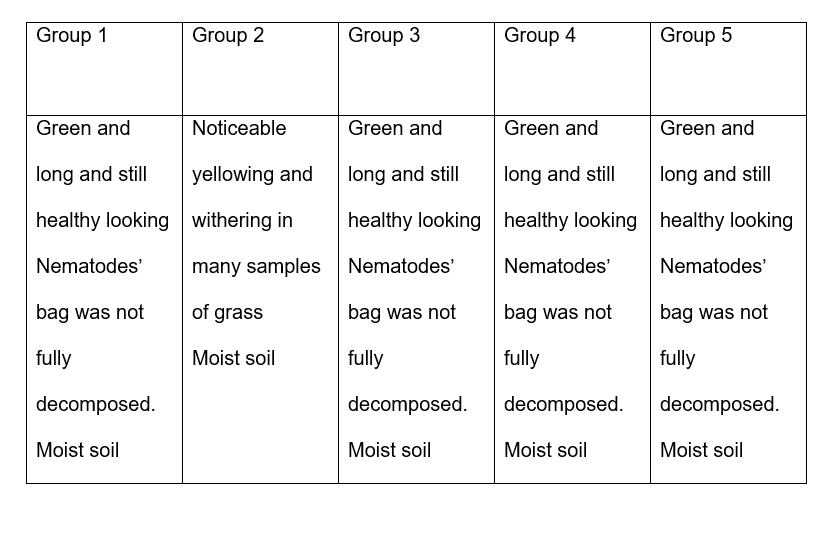
Discussion
The results show that in terms of grass growth, Group 4 has the highest average height as well as percent yield in comparison to the other groups (figure 3). In terms of clover growth, Group 5 had the highest percent yield (figure 4). Clover average heights were not recorded, as there were not enough samples from each Group to create a reasonable sample size. Group 2 in general had the lowest grass and clover yield, and average grass height (figure 2, 3, 4) which may have been correlated to visible changes such as yellowing and wilting after nematode implementation. The yellowing and wilting of grass are normally due to drought stress, insect damage, nutrient deficiency, unwanted grass species and/or lawn disease (Grassperson). However, these possible factors seem unlikely as none of the other experimental groups which underwent the same conditions exhibited the same symptoms, so it is unclear what is the true cause of these results.
The results indicate that the pH level between 5-7 and the presence of clover and nematodes in the soil has no clear effect on the growth of grass as varying pHs had different effects on average grass height and percent yield. This could mean that the treatments can be used together as they do not cause extreme detrimental effects on the grass health.
Due to unforeseen circumstances, pH levels were not measured weekly after planting, so it is unknown as to whether there was deviation from the original pH to the pH at the end of the experiment. However, the results were aligned with the idea of how grass tends to prefer soil Ph levels between 5.8 and 7.2 (Pennington) indicating that even when grown with different treatments like clover and nematodes, they still favour the same pH level as the treatments do not inhibit their growth. Contrary to prior research on percent germination of grass, where grass has a lower percent yield at pH levels near 7, the results here indicated that grass has a higher yield at pH level 7 (Stubbendieck 1974). This could be due to the different species of grass that were grown.
Human error was introduced in the grass seeding, watering system, as well as data collection and recording of this experiment. It could have impacted the results of the experiment as human accuracy and precision are not always consistent, allowing for seed clumping, uneven distribution of water, and inaccurate measurements. Plant placement may have also played a role as the plants were not equal distance from the vent in the floor that emitted hot air to maintain the room temperature, potentially impacting the growth of the grass in the boxes (Group 5, 4, and 3) closer to the heat source. There was no concrete watering schedule, so it possible that the inconsistency also played a role in the plant growth. The measuring equipment was not made for the precise measurements needed in this experiment as the scale was meant for kitchen use. As grass seed count is based on an approximation and correlated with the weight of each seed, it is highly possible that the exact number of seeds planted per group differed affecting the true percent yield value.As mentioned before the importance of this experiment is for landowners private and public everywhere who suffer from Chafer Beetles to understand the best pH for their grass when using nematode treatment and clover treatment for their land and affirm that both treatments can happen concurrently without significant detrimental effects. If this experiment were to be replicated several times Group 2 should be monitored to see if the results from this experiment would happen again. Replications testing different grass breeds, as well as adjusting temperatures, amount of water or even pH of the water given to each group could also be done.
References
Ali, Farman, and David A. Wharton. “Cold Tolerance Abilities of Two Entomopathogenic Nematodes, Steinernema Feltiae and Heterorhabditis Bacteriophora.” Cryobiology, Vol. 66, no. 1, 2013, pp. 24–29.
“European Chafer Beetle.” City of Vancouver, Online. April 15, 2021
Macdonald, Mark. “European Chafer Beetles.” West Coast Seeds, 10 Feb. 2020, Online. April 15, 2021
“Insect-Parasitic Nematodes for the Management of Soil-Dwelling Insects.” Penn State Extension, 11 Apr. 2021. Online. April 28, 2021
“Why, When and How to Apply Lime to Your Lawn.” Pennington.com, Pennington Fertilizer, 11 May 2020, Online. April 28, 2021
Perry, Leonard. Beneficial Nematodes, Online. April 28, 2021
“European Chafer.” Pest Tracker, Online. April 15, 2021
“Soil PH.” Queensland Government, 24 Sept. 2013, Online. April 15, 2021
Stubbendieck, J. “Effect of PH on Germination of Three Grass Species.” Journal of Range Management, vol. 27, no. 1, 1974, p. 78., doi:10.2307/3896448.Wood, M., et al. “Soil Acidity Factors and Nodulation OfTrifolium Repens.” Plant and Soil, vol. 78, no. 3, 1984, pp. 367–379., doi:10.1007/bf02450370.
Van Eekeren, Nick, et al. “A Mixture of Grass and Clover Combines the Positive Effects of Both Plant Species on Selected Soil Biota.” Applied Soil Ecology. Volume 42, Issue 3, pages 254-263.